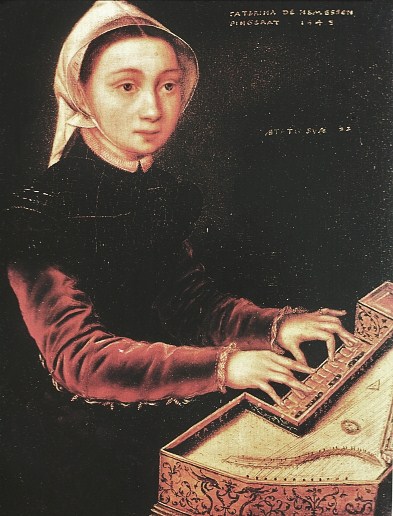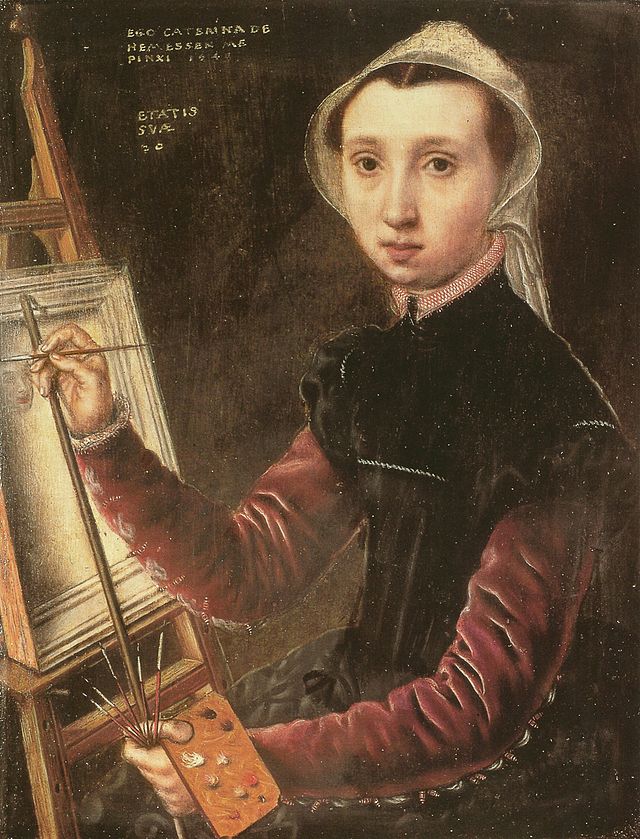
LIFE AS MYTH
![]()
JOURNAL
![]()
JOURNAL 2008
![]()
Impressions at sunrise
Finding the inner muse
![]()
AUTUMN 2008
Portraits of self
![]()
LIFEWORKS
![]()
ATLAS
![]()

AUTUMN 2008
CATERINA VAN HEMESSEN 1548
Girl at a spinet (self-portrait?), Caterina van Hemessen. 1548. Wallraf-Richartz Museum, Cologne. Self-portrait. Caterina van Hemessen. 1548. Öffentliche Kunstsammlung, Basel.
For most of history, Anonymous was a woman.
Virginia Woolf (1882-1941), British writer and essayistCaterina Van Hemessen trained with her father, an accomplished artist. The self-portrait of Caterina Van Hemessen (right) is the earliest known example of an artist seated at an easel. The other painting of a young woman playing a spinet is earlier and may be either Caterina or her sister. If it is Caterina, then the painting is the oldest surviving self-portrait of an artist at work.
Marriage was not the only obstacle to the professional development of female artists. Guilds usually excluded women from membership and from becoming free masters. One of the exceptions was Van Hemessen who enjoyed considerable success, becoming one of the few female artists in the Guild of Saint Luke and subsequently secured the patronage of Queen Mary of Hungary.
The Guild of Saint Luke was a specific organization of European artists within the larger guild system which prospered between the 14th and 18th centuries. Earliest guild members were primarily manuscript illuminators; however, over time, guild memberships often varied to include scribes, visual artists, sculptors, art dealers, art patrons, painters and decorators. The Guild of Saint Luke, taking its name from the apostle credited with painting the first icon of Mary, was one of the earliest forms of these artist guilds. It exercised considerable power through its regulations of apprentice training and art sales. It also mediated disputes between artists or artist and their clients.
In 1554, Van Hemessen married Chrétien de Morien, the organist of Antwerp Cathedral. There is no later artwork that can be identified as hers, leading art historians to speculate that she stopped painting after she married. In 1556 Queen Mary resigned her regency and invited Van Hemessen and her husband to join her in Spain. The couple lived there until Queen Mary's death in 1558. In appreciation for their loyalty, the queen bequeathed them funds sufficient to live the remainder of their lives in comfort.


